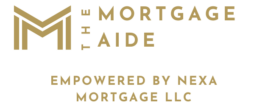How Much Should You Save?
Most people think they need 20% down, but that’s not always true. Here’s a quick look at some common options:
Conventional Loans: As low as 3% down if you qualify, but putting down 20% helps you avoid Private Mortgage Insurance (PMI).
FHA Loans: Requires at least 3.5% down if your credit score is 580 or higher.
VA Loans: If you’re a qualified veteran or active-duty service member, you can skip the down payment entirely!
USDA Loans: For eligible rural areas, you may qualify for zero down payment.
Example:
If you’re eyeing a $300,000 home:
3% down = $9,000
3.5% down = $10,500
20% down = $60,000
Why a Bigger Down Payment Can Help
Lower Monthly Payments: The more you put down, the smaller your loan balance, which means lower monthly payments.
Avoiding PMI: With a 20% down payment, you won’t have to pay PMI, which can add $100+ to your monthly bill.
Better Loan Terms: Larger down payments often lead to better interest rates and loan terms.
Tips to Save for Your Down Payment Faster
Saving for a down payment may feel overwhelming, but small steps can lead to big results. Here’s how to get there:
1. Set a Realistic Goal
Figure out the price range of homes you’re considering and calculate your ideal down payment. Then break it down into monthly savings goals.
Pro Tip: If you’re aiming for $12,000 in 2 years, that’s about $500 per month.
2. Create a Separate Savings Account
Open a dedicated account just for your down payment fund. This keeps your savings safe and makes it easier to track progress.
3. Automate Your Savings
Set up automatic transfers from your checking account. Treat it like a monthly bill to ensure consistency.
4. Cut Unnecessary Expenses
Look for areas to trim your budget. Even small changes—like skipping takeout or canceling unused subscriptions—can add up over time.
5. Boost Your Income
Consider a side hustle or part-time gig. Extra income can go directly toward your down payment goal.
6. Apply for Down Payment Assistance
Check if you qualify for down payment assistance programs in your area. These programs can provide grants or low-interest loans to help with your initial costs.
Bonus Tip: Factor in Closing Costs!
Don’t forget—besides the down payment, you’ll need to cover closing costs, which typically run about 2-5% of the home price.
Ready to Start Saving?
Buying a home is a big step, but with a solid plan in place, you can reach your down payment goal sooner than you think. Whether you’re starting small or going big, every dollar saved brings you closer to homeownership. Need help figuring out the best loan option for you? Reach out today, and let’s explore your options!




